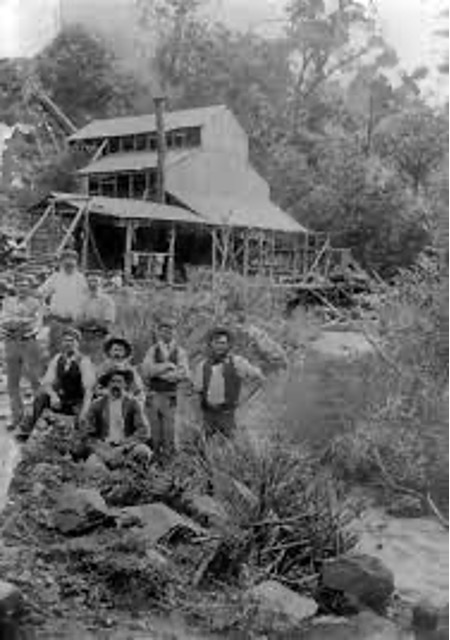What was life like in the colony for the Tronier brothers in 1870s?

In the 1869s and 70s Tronier family members are found on shipping records on the steamer from MacLeay River and Port Macquarie to Sydney, doing several trips. Was it Carl Tronier checking out the northern part of the state, looking for riches or was it August’s growing family who were looking for new opportunities?

In 1878, Joachim August set himself up as a professional photographer in George St, Sydney. Some of his work is still available today both in the family collections and in government archives. Tronier the photographer recorded many fine examples of life in the colony. Sadly, though by July 1878 in the Evening News and NSW Government Gazette reported Joachim August was involved with the bankruptcy court and at the third meeting in September it was to be decided as to whether he would be permitted to maintain his personal and household items. The results of the determination are believed to be dismissed.
On 5 August 1871 Carl Christian Andreas Haaber Tronier married our 2-x great grandmother, Winifred Wellings in Camden New South Wales. Winifred was born in 1849 and was fourteen years younger than Carl. Her parents were John Wellings and Amelia Pearson. John Wellings was a manager at Macarthur Park for the Macarthur’s and Amelia was the Post mistress and the local midwife at Camden. Winifred was one of twelve children and was just past her twenty first birthday when she married.

State Library of Victoria, Art Gallery of NSW
In 1872 life became very busy for Carl and Winifred. On 20th May that year Winifred gave birth to a daughter Ethel Alexandria Tronier at their residence at 236 Crown St Woolloomooloo Sydney. However, it wasn’t long before the little family headed north to the New England. It was at Glen Innes that Carl started his own business in coach building. These coaches were used for mail and passengers between Glen Innes and Grafton.
Although many reports in the newspapers of the day sang the praises of the quality of his workmanship the business did not thrive. In October 1874 Winifred gave birth to a second child a son Arthur Christian Tronier at their home at the village of Wellingrove. Today’s records show that originally this township was a significant centre with a magistrate who conducted court of petty sessions for the area and the town was one of the principal settlements of the northern New England district. Before the Tronier’s arrived, the Woolpack Inn was built but in 1849 the town was gazetted as too far from main roads so by the time the family arrived the village was in decline.
This did not help in creating family riches and to make matters worse their young son Arthur died at two days of age. Over the years, Winifred and Carl had eight children but sadly of the eight only Ethel, the eldest survived. Carl was forced to make money advertising Scottish Highland Oil while still continuing his coach manufacturing. In April 1877 he is mentioned as exhibiting his coach in the Glen Innes Show. His business was reported to be “equal to the best in the colony”.
Previously in 1860, the brothers’ father Christian Tronier had died in Denmark. Maybe Carl and Joachim didn’t realise their stories were going to become a story of “Riches to Rags” because records show that Carl sponsored his younger brother Neils Frederick Adam Tronier (35years) and his wife Anna (28 years) to emigrate to Australia from Denmark. However further records show that Carl was given a refund and it appears that Neils and Anna did not come to Australia. The world was changing but was it to better time?
Carl and his family seemed to go from one disaster to another, as did his older brother Joachim who on 16 June 1879 was again in bankruptcy court Sydney as recorded in Sydney Morning Herald. Joachim for the next few years was in and out of Bankruptcy Court. From records in the Sydney Morning Herald and New South Wales Government Gazettes between 1880 and 1881, it looks like he filed for bankruptcy at least three times, with his creditors only receiving one shilling, six and a half pence in the pound! Carl on the other hand by October 1879 he was trying to make the most of his bad situation.
Having been in the colony now for twenty years, Carl applied for citizenship in New South Wales. A non-British resident needed to apply for naturalisation if they wished to purchase their own property. Records show Carl received his papers in October 1878 and by 1879 Carl’s family of three were living in East Street Glen Innes. For our direct ancestors, Nature then took a toll and in July 1879 a terrific gale hit Glen Innes. Many New South Wales papers recorded the event in graphic detail. Winifred, Carl’s wife, only just escaped the near-death experience as a tree crashes through the roof of their home in East Street.
From what can be seen through our research, Carl did not let a bad situation keep him down. Records in New South Wales State Archives, 29th October 1879 show Carl Tronier’s application for registration of Auriferous (Gold) Leases in Glen Innes. He was now employed as the manager of Glen Elgin Gold Mine and Winifred is a Post mistress, following in her mother Amelia Welling’s and grandmother Eliza Pearson’s footsteps both having been Post Mistresses in Camden.
Glen Elgin was about forty kilometres from Glen Innes and not an easy mine to work because of the terrain. This area of the New England had originally been mined for tin and then abandoned as not a viable area. What was mining life like for Carl and his family?

